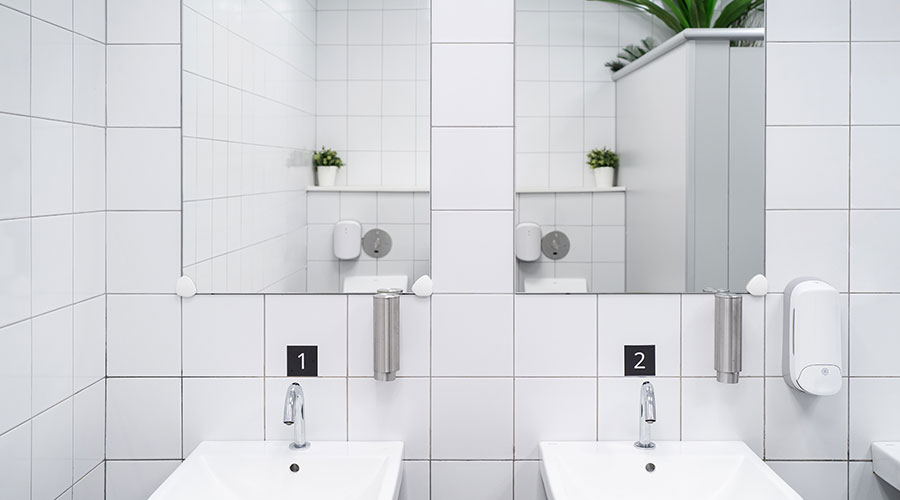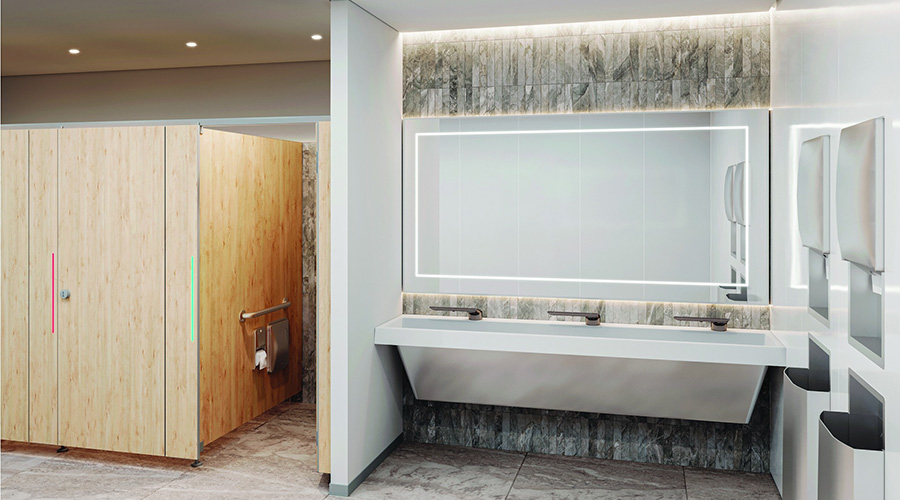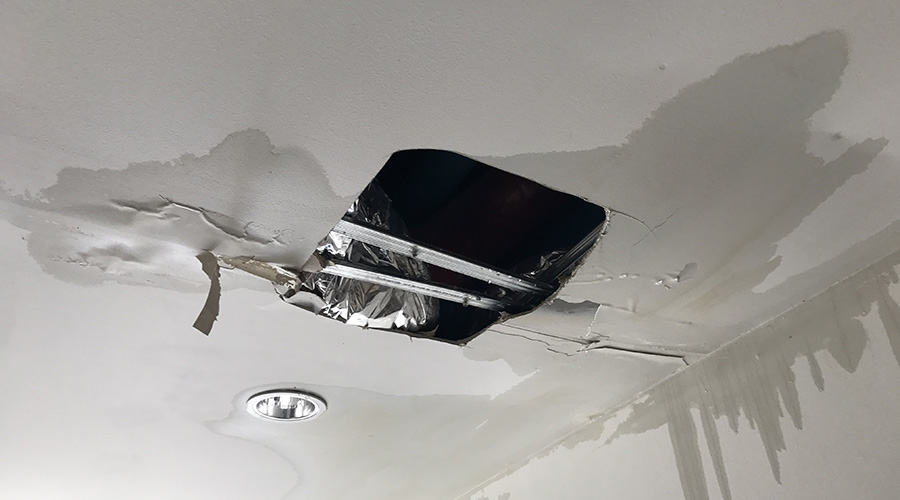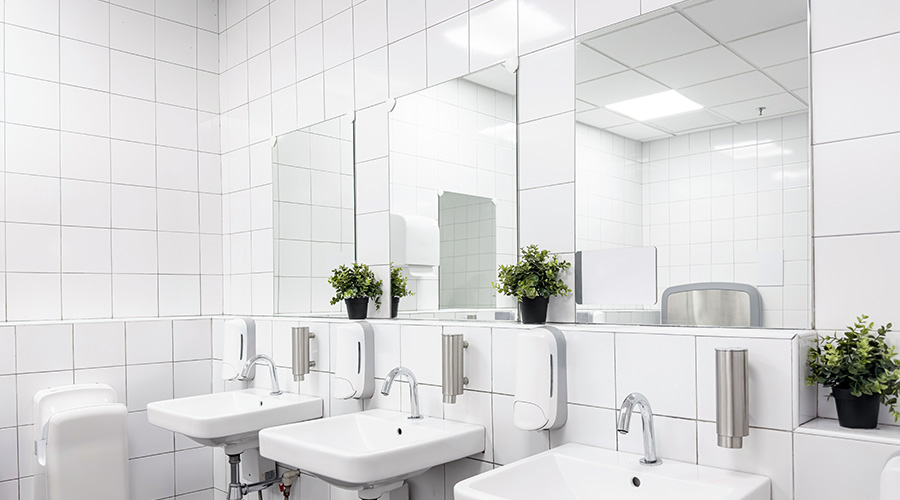Plumbing and Restrooms - Dual-flush fixtures
Dual-flush fixtures. These fixtures are included as high-efficiency products in the WaterSense program with an effective flush volume not to exceed 1.28 gallons, or 4.8 liters. One flush option uses the full flush — 1.6 gpf or 1.28 gpf — to clear the trap of solids, similar to a standard fixture. The second option uses less water — a maximum of 1.1 gpf — enough to clear the trap of liquid waste. Users do not need to use the full-flush option for every use, and they generally appreciate the opportunity to use less water.
Replacement flush-meter-type valves and flapper, gravity-type valves are available for standard 1.6 gpf tank fixtures and can convert an existing single-flush fixture to dual-flush fixture. This tactic helps reduce the cost of a light renovation and can qualify for LEED credits.
Urinals. The current federal standard for commercial urinals is 1 gpf. For the sake of comparison, some older urinals use as much as five times that amount.
A standard urinal uses 1 gpf. Many good units on the market use 0.5 gpf, and some use one-eighth gpf. The 0.5 gpf urinals should be standard to reduce water use. The one-eighth gpf fixtures work if properly installed and maintained, but they are only available with sensor-operated valves.
Waterless urinals have been around and successfully installed in all kinds of institutional and commercial buildings for about 20 years. These urinals operate well when installers and housekeepers follow the procedures recommended by the product's manufacturer. A lack of maintenance for even short periods of time can cause improper operation.
Related Topics:














